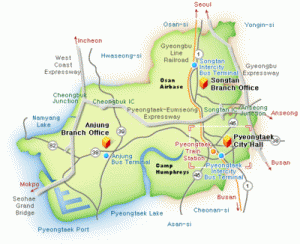 Last week’s breathless Washington Times “Inside the Ring” report on North Korea’s interest in nuclear anti-ship weaponry is unrealistic, but, as much as I hate to admit it, the underlying idea–using subs as a nuclear delivery platform–is plausible.
Last week’s breathless Washington Times “Inside the Ring” report on North Korea’s interest in nuclear anti-ship weaponry is unrealistic, but, as much as I hate to admit it, the underlying idea–using subs as a nuclear delivery platform–is plausible.
But first, step away from Gertz and his China-based fear-mongering. Let’s drop the Chinese-threat lenses, and realize China and North Korea are very different countries. It is highly unlikely that North Korea is–as Gertz and others suggest–following in China’s strategic footsteps. Rather than envisioning North Korea with a nuclear carrier-killer weapon, just…let’s all take a deep breath and try, just for once, to look beyond the threat to U.S. platforms and, well, focus on Korea.
North Korea is, ultimately, interested in disrupting South Korea’s defenses–their Army. If we accept that, then it is plausible that North Korea may be considering the employment of a sub or parasitic swimmer vehicle to deliver a nuclear device. Not for use in anti-ship torpedoes or conventional anti-ship mines–but for employment as a land-attack weapon.
You read me correctly–a land-attack weapon. Here’s why:
In a technical sense, North Korea is unlikely to have produced a warhead small enough or reliable enough to fit into the country’s limited arsenal of conventional “nuke-capable” delivery systems–i.e. missiles, artillery shells and aircraft. The North is trying, but North Korea’s prior efforts to produce a relatively small “deliverable” warhead are going poorly–the first 1996 attempt fizzled, and, even though the second 2009 test was successful (if it actually happened), it was still pretty puny. They aren’t there…yet.
Turning instead to a clandestine sub-oriented delivery system obviates most warhead/missile payload-driven restrictions on device weight and volume, while allowing North Korea the freedom to develop heavier, less technically ambitious nuclear devices.
North Korea’s mini-subs can handle a simple, good-sized nuclear detonation device–and possibly some extra shielding, too.
 It’s not a desperation move; it is all strategically justifiable. Given that much of South Korea’s critical infrastructure rests near the coast, mini subs–and, perhaps, conventional smuggler-oriented ships–offer ideal means to hit and hurt South Korea’s army.
It’s not a desperation move; it is all strategically justifiable. Given that much of South Korea’s critical infrastructure rests near the coast, mini subs–and, perhaps, conventional smuggler-oriented ships–offer ideal means to hit and hurt South Korea’s army.
Don’t get tied into the old land-centered European…or, oh, land-based Pakistani/Indian nuclear doctrine–South Korea is a peninsula, and uniquely vulnerable to threats from the sea. Even Pyeongtaek, the home of Camp Humphreys–where most of Korea’s U.S. military contingent is set to be based–would have a very tough time functioning in the event of even a modest ground-burst in the nearby harbor.
Remember, any underwater nuclear detonation in shallow littoral waters will spread contamination for miles. Recall that the Operation Crossroads’ underwater “Baker” test was a dirty, dirty plutonium-implosion bomb with a yield of a little over 20 kilotons–something North Korea can achieve with a simple “Little Boy” gun-type bomb.
We are not ready to fight in a contaminated environment. It’s wise to read between the lines of some recent reports from the Center For Strategic and Budgetary Assessments. As far as Korea goes, the West isn’t ready to conduct “highly distributed, highly integrated power-projection operations from standoff ranges under the conditions of radioactive contamination.”
All North Korea needs to do is to cut off South Korea for a brief period…and a few good ‘ole dirty bombs in key locations may well be the way to do it.
For the North Koreans, a turn to sub-based nuclear delivery systems offers some operational benefits, as well. First, North Korea may not have enough confidence that it can actually penetrate South Korean/Japanese airspace using an aircraft or a missile. Aside from the fact that North Korea has a poor record of actually penetrating deep into South Korean airspace, the North Koreans may not have enough confidence in their pilots–once in the air, there is little to stop a single North Korean aviator from defecting. And the missile threat? Well, as I said before, North Korea may not be ready to mount a nuclear warhead on a missile and…maybe they give more credence to the theater missile defense capabilities than most western observers do.
Second, as far as delivery systems go, North Korean submarines (and their smuggler-oriented surface ships) are the only Northern platforms that have a record of entering South Korean (and, for that matter, Russian, Japanese and Chinese) coastal regions undetected.
North Korean subs have a long operational history. In 1996, one NK sub ran aground while picking up a North Korean infiltration team, and in mid-1998, while returning from a successful infiltration, a second mini-sub got tangled in fishing nets. The next month, in July 1998 , a dead commando was found near a 5-man submersible infiltration boat, and in December of that year, South Korean patrol craft caught and sank a North Korean mini-sub near Yeosu (which is…ahh, south of Busan!) And then there’s the Cheonan sinking of 2010. Without a doubt, North Korean subs have proven themselves capable of penetrating South Korean territory–far into South Korean territory.
And finally, keep in mind that North Korean submarines are less of a personnel risk. Given the relatively large crew aboard a North Korean sub, it is hard–and nearly impossible–to engineer a mass defection. With the Cheonan incident, the revolutionary zeal of the North Korean sub crews needs no further demonstration. The motivation level is pretty frightening–In virtually every sub-based infiltration incident that made it into the open press, North Korean infiltrators either died trying to get back to the homeland, committed suicide, or…were killed by their more enthusiastic partners. As much as we want to believe, there is no wiley old Marko Aleksandrrovich Ramius in the North Korean sub fleet.
As far as subs go, only a single North Korean crew-member is known to have been captured. That’s a heck of a record, and suggests the North Koreans will have few problems finding volunteers for a one-way bomb-run.
This is why any hint of association of North Korea’s submarine force with nuclear weaponry needs to be taken very seriously.
South Korea–along with Japan–must get serious about sea surveillance, radiological monitoring, anti-submarine warfare and, well, understanding the operational challenges of an NBCR environment.
And the rest of us? Well, we need to get serious about the Korean peninsula–a war there will be a dirty, asymmetric fight that the modern world has never experienced before. For tactics and weapon technologies, a fight on the Korean peninsula would be a far more bloody modern-day replay of the Spanish Civil War.

{ 5 comments… read them below or add one }
@Craig
No I haven’t forgot those. I put the Tirpitz operation as it is more close to the scenario – a custom mini sub fitted with odd / unconventional – but effectivve – explosives penetrating a secure port during actual war time.
@blacktail
If they choose to gas a city, it will make it a war for survival; on the other hand if the majority of the casualties are military personell, North Korea can simply walk up and say “Well, we are not going to wait for you to train crews for 10 or so frigates – so we will take up those little islands close to our border and call it a day”.
The thing is that Korea is a big and messy jigsaw for anyone to solve – after the latest incident and the ongoing military exercises, China is starting to become increasingly annoyed. CCTV 4 has a show almost every night, watching the naval exercises in the region by US, SK, JP and analysing the situation. Note that CCTV 4 is the only state channel from China broadcasting using Mandarin in the popular satellites (in Europe at least) where everyone can access with the most basic satellite TV equipment
Hi G–Don’t forget the Italian’s successful work with mini-subs at Alexandria and their attempts elsewhere in the Med during WWII!
Hi blacktail; you missed the point–North Korean mini-subs can certainly take aboard a basic gun-type atomic bomb. Those are far simpler than implosion devices–we were so confident it would work, we dropped one in combat without testing it! (With Korea enriching uranium, that is even a greater concern) But you are not going to fit gun-type bombs on a missile; you can fit them aboard a 10-20 person sub. Cheers!
That’s certainly an eyebrow-raising scenario, but all of North Korea’s nuclear tests to date have been duds. But until Pyongyang can cough-up a nuke that works — AND small enough to fit inside a minisub — it’s not very plausible.
Those mini-subs would be more dangerous if North Korea used them to deliver commandos to random coastal cities, and then gas said cities.
Interesting concept, more so because attacks of similar kind happened before (see Operation Source – British mini-subs attack Tirpitz at port: http://www.bismarck-class.dk/tirpitz/history/tiropersource.html)
A hypothetical scenario would be to park a couple of mini-subs with a crude nuclear bomb on board as close to a military port as possible, have the crew “abandon” their subs and be captured if possible to keep the port security busy. The captured crew can tell a story of more mini-subs coming so that the port is alerted, sailors dashing to man their ships and 30 to 60 minutes later the devices detonate in a port full of activity. Even if the actual warships don’t get crippled, a good portion of the experienced crews manning those vessels will be seriously affected from radiation poisoning (including the “deserting” submariners, thus ensuring no information will be extracted from them). After all, a weapon is as good as the soldier who yields it.